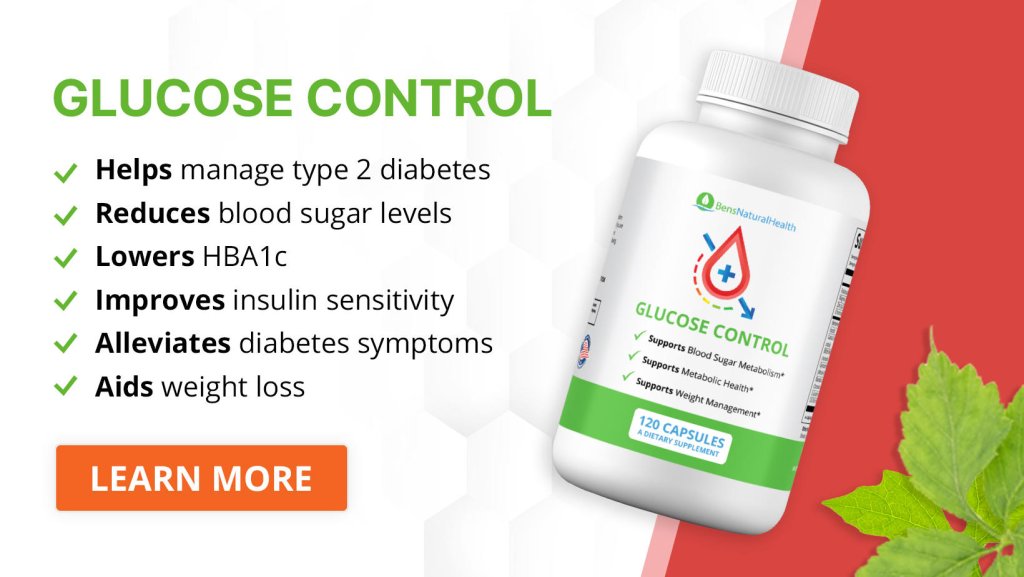Diabetes insipidus and the syndrome of inappropriate antidiuretic hormone secretion (SIADH) are two disorders that affect how your kidneys (and other relevant organs) regulate the amount of water in your body.
Your body is an amazing machine that depends on water to function properly.
For things to work optimally, you need to consume an appropriate amount of water every day. But you also need to excrete a similar amount of water to create a balance.
This balance is achieved by various body parts, including your brain, endocrine system, and kidneys.
If you want to understand diabetes insipidus vs SIADH and know how they differ from each other, this article is for you.
Below, we discuss everything you need to know about diabetes insipidus and SIADH, including their definitions, causes, symptoms, differences, similarities, and treatments.
Get Your FREE Diabetes Diet Plan
- 15 foods to naturally lower blood sugar levels
- 3 day sample meal plan
- Designed exclusively by our nutritionist
What is diabetes insipidus?
Diabetes insipidus is a disorder in which a person makes too much urine. A healthy adult makes up to two liters of urine in a day. Someone who has diabetes insipidus can make up to 18 liters of urine a day.
The excess urine production leads to the affected person frequently passing large amounts of urine, a condition known as polyuria. There may also be an increased urge to drink more fluids, a condition known as polydipsia.
Diabetes insipidus is a rare condition affecting about 1 in 25,000 people.
Causes
Diabetes insipidus is mainly caused by an abnormality with a hormone called antidiuretic hormone (also known as vasopressin or ADH, for short). The antidiuretic hormone helps the kidneys regulate the amount of water in your body.
There are four main forms of diabetes insipidus based on the cause:
- Central diabetes insipidus: In this type of diabetes, there is a deficiency in the production of vasopressin.
- Nephrogenic diabetes insipidus: this is caused by a decrease in sensitivity to normal levels of circulating antidiuretic hormone in the blood vessels of the kidneys.
- Primary polydipsia (dipsogenic diabetes insipidus): This involves excessive intake of fluids and is not related to a deficiency of ADH. It is caused by damage to the hypothalamus.
- Gestational diabetes insipidus: This is a reversible form of diabetes insipidus that occurs during pregnancy. It occurs when the mother’s placenta produces an excess amount of the enzyme that breaks down antidiuretic hormone leading to a decrease in the levels of ADH.
Signs
When someone has diabetes insipidus, they can present with the following:
- Frequent urination and passage of excessive, unusually large amounts of urine
- Feeling thirsty and drinking very frequently
For children, in addition to polyuria and polydipsia, they may become severely dehydrated as a result of the excessive fluid loss.
They may also have vomiting, irritability, constipation, fever, disturbance in sleep patterns, and even delayed growth.
Complications of diabetes insipidus
The major complication of diabetes insipidus is dehydration, which results from the excessive loss of water and electrolytes through the urine.
Drinking a lot of fluids after urinating large amounts can help to replace the amount lost and help to prevent dehydration.
Investigations
To make a diagnosis of diabetes insipidus, doctors first take a history from the patient and conduct a physical exam. They then proceed to conduct some tests to confirm the suspicion.
Some tests for diabetes insipidus include:
- Blood tests looking for the levels of sodium in the blood.
- Urinalysis
- Water deprivation test
- MRI
What is SIADH?
SIADH is short for syndrome of inappropriate antidiuretic hormone. SIADH is basically the opposite of diabetes insipidus. It is a condition in which there is an excessive level of the antidiuretic hormone in the blood.
The excess ADH causes the body to retain water and consequently leads to a decrease in electrolytes, especially sodium.
The result is hyponatremia (low levels of sodium in the blood), a condition that can be life-threatening.
SIADH is a common cause of hyponatremia and occurs in about 15-30% of patients who are hospitalized. It is common among older people and rare in children.
Causes
SIADH can occur as a complication of a wide range of conditions including infections, malignancies, and even the use of certain drugs.
Some specific causes include:
- Malignancies such as lung cancer (especially small cell carcinoma), pancreatic cancer, and duodenal cancer. Some drugs used in the treatment of cancers have also been implicated as causes of SIADH.
- Central nervous system abnormalities: Infections such as meningitis and encephalitis, stroke, head injury.
- Major surgeries performed on the brain, chest or abdomen could lead to SIADH
- Severe lung diseases such as pneumonia, asthma, lung collapse, etc. The mechanism by which this occurs is not known.
- Certain drugs, such as:
- Those used for hormone therapy like desmopressin, vasopressin, and oxytocin.
- Anticancer drugs like methotrexate, cyclophosphamide, cisplatin, and vinblastine.
- Antidepressants like amitriptyline.
- Antipsychotic medications like haloperidol.
- Medications used to treat epilepsy such as sodium valproate.
- Antibiotics such as ciprofloxacin.
Symptoms
Symptoms of SIADH could differ from person to person. They may present both as symptoms of hyponatremia and those of the underlying disease condition.
The person may have:
- Nausea
- Vomiting
- Tremors
- Irritability
- Cramping
- Changes in mood
- Impaired memory
- Fits
- Changes in personality such as confusion, aggressive, hallucination
- Loss of consciousness in severe cases
Investigations
As with any other medical problem, taking a history and performing a physical examination are the first steps. Then, some laboratory tests may be ordered.
These include:
- Blood and or urine tests for electrolytes, especially sodium levels.
- Chest X-ray
- CT scan
- MRI

Diabetes insipidus vs SIADH
Below, we compare diabetes insipidus vs SIADH, including similartiites, differences, management, and treatment.
Similarities
Both diabetes insipidus and SIADH are conditions in which there are problems with the regulation of water in the body.
They are both generally caused by problems with the secretion or function of antidiuretic hormone.
They can both cause life-threatening complications and both are generally not common conditions.
While there are some similarities between the two, they are very different conditions with some key features which we discuss below.
Differences
The most fundamental difference between diabetes insipidus vs SIADH lies in what causes each disorder.
The major cause of diabetes insipidus is a decreased level of ADH. SIADH, on the other hand, is caused by increased levels of ADH.
You can think of the two conditions as opposites. Here are some more differences between them:
| Characteristics | Diabetes insipidus | SIADH |
| Definition | A disorder in which a person makes too much urine leading to frequent passage of large amounts of urine | A disorder in which there is an excessive level of ADH in the blood, causing the body to retain water |
| Urine output | Excessive urination (polyuria) | Low urine output (oliguria) |
| Level of sodium | High levels of sodium due to the excess fluid loss | Low levels of sodium due to the excess fluid retention. The excess fluid causes a dilutional effect |
| Symptoms | Polyuria, polydipsia, signs of dehydration such as thirst, dry mouth | Nausea, vomiting, tremors, cramps, irritability, seizures, and coma |
| Complications | Dehydration and subsequently hypovolemic shock | Hyponatremia, seizures |
Management of diabetes insipidus vs SIADH
Because the underlying cause of diabetes insipidus is the opposite of that of SIADH, the management options for the two conditions are contrasting.
Basically, diabetes insipidus is treated with fluid replacement. SIADH, on the other hand, is treated using fluid restriction.
We go into more detail below:
Treatment of diabetes insipidus
Diabetes insipidus is generally treated by replacing lost fluid. In mild cases, simply drinking more water may be adequate. The underlying cause also needs to be identified for specific treatment to be started.
Here’s how different types of diabetes insipidus are managed:
- In central diabetes insipidus, desmopressin (a synthetic form of vasopressin) is used to replace ADH and it helps to decrease the amount of urine the body produces. The medication is available as a pill, nasal spray, or injectable form.
- In nephrogenic diabetes insipidus, a low-salt diet is advised to help decrease the amount of urine the kidneys produce. If the condition is caused by a certain medication, it should be stopped.
- Primary polydipsia is mainly treated by reducing fluid intake. Identifying the underlying cause and treating it can also help.
- Like central diabetes insipidus, gestational diabetes insipidus can also be treated using desmopressin.
Treatment of SIADH
The treatment of SIADH depends on factors such as the severity of the affected person’s condition, medical history, and age. In less severe cases, restriction of fluid intake is usually the most common method of treatment used.
Other methods of treatment include:
- Use of medications that prevent the action of antidiuretic hormone.
- Use of oral salt tablets in combination with diuretics. Diuretics are drugs that help you get rid of salt and water through the urine.
- Treatment of the underlying cause. For instance, in the case of malignancy, removal of the tumor, chemotherapy, and radiotherapy. And, in the case of meningitis, treatment with antibiotics.
Which is more serious, diabetes insipidus or SIADH?
Neither one of these conditions can be said to be more serious than the other.
Both diabetes insipidus and syndrome of inappropriate antidiuretic hormone are serious conditions that may be life-threatening if left untreated.
It has been found that complications resulting from both these conditions are associated with worse consequences and increased duration of stay in the intensive care unit (ICU).
Conclusion
Diabetes insipidus and SIADH are contrasting disorders that affect the way the kidneys regulate water levels in the body.
Diabetes insipidus is mainly caused by a decreased level of ADH, which leads to increased urination.
On the other hand, SIADH is a condition in which there is an excessive level of the antidiuretic hormone in the blood, causing the body to retain water.
Diagnosis depends on the history, physical examination, laboratory tests, and imaging studies.
The treatment modalities used are different for both.
In diabetes insipidus, fluid intake may be recommended to replace the fluid loss and prevent dehydration. Depending on the severity of the disease, this may or may not be the only treatment required.
In SIADH, fluid is restricted. Fluid restriction is usually not sufficient on its own in SIADH and there is often a need for additional drugs to be used.
Explore More








